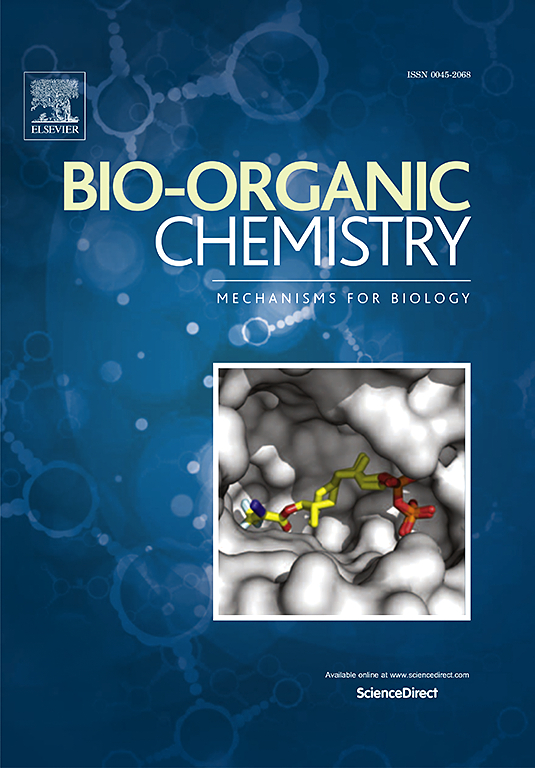Hederagenin ameliorates ferroptosis-induced damage by regulating PPARα/Nrf2/GPX4 signaling pathway in HT22 cells: An in vitro and in silico study
IF 4.5
2区 医学
Q1 BIOCHEMISTRY & MOLECULAR BIOLOGY
引用次数: 0
Abstract
Background
Hederagenin (HG), derived from ivy seeds, is known to offer protection against Alzheimer’s disease (AD). However, the specific molecular pathways through which it counters ferroptosis-induced neurotoxicity are not fully elucidated. This investigation seeks to delineate the processes by which HG mitigates neurotoxic effects in HT22 cells subjected to glutamate (Glu)-induced ferroptosis.
Methods
HT22 cell ferroptosis was prompted by Glu exposure. Cell viability was assessed using CCK-8 and LDH assays, while Fe2+ fluorescence and assays of iron-related proteins served to gauge intracellular Fe2+ concentrations. Evaluations of mitochondrial structure and functionality employed JC-1 staining and transmission electron microscopy. Assessments of ROS, lipid peroxidation, MDA, 4-HNE, and the GSSG/GSH ratio were conducted to ascertain HG’s antioxidative efficacy. The expression of proteins within the PPARα/Nrf2/GPX4 pathway was quantified via western blotting, with molecular docking (MD), and molecular dynamics simulations (MDS) used to explore protein interactions.
Results
HG diminished the cellular toxicity triggered by Glu in HT22 cells, lowered Fe2+ within cells, and rejuvenated mitochondrial morphology and performance. Concurrently, it modulated proteins critical to Fe2+ metabolism, diminished ROS and lipid peroxidation, and elevated GSH/GSSG ratios. Enhanced PPARα/Nrf2/GPX4 protein levels were corroborated by western blot results. Furthermore, molecular docking revealed favorable binding of HG to the proteins PPARα, Nrf2, and GPX4, with binding energies of −7.751, −7.535, and −7.414 kcal/mol, respectively. MDS confirmed robust interactions between HG and these pivotal targets.
Conclusion
The evidence suggests that HG effectively mitigates Glu-induced ferroptosis in HT22 cells by activating the PPARα/Nrf2/GPX4 signaling pathway. These findings endorse HG’s potential as a nutritional adjunct for AD management.

Hederagenin通过调节HT22细胞PPARα/Nrf2/GPX4信号通路改善铁中毒诱导的损伤:体外和硅细胞研究
背景:从常春藤种子中提取的Hederagenin (HG)被认为可以预防阿尔茨海默病(AD)。然而,它对抗铁中毒诱导的神经毒性的具体分子途径尚未完全阐明。本研究旨在描述HG减轻HT22细胞受谷氨酸(Glu)诱导的铁下垂的神经毒性作用的过程。方法:Glu诱导HT22细胞铁下垂。细胞活力通过CCK-8和LDH测定来评估,而Fe2+荧光和铁相关蛋白测定用于测量细胞内Fe2+浓度。采用JC-1染色和透射电镜对线粒体结构和功能进行评价。通过评估ROS、脂质过氧化、MDA、4-HNE和GSSG/GSH比值来确定HG的抗氧化效果。通过western blotting定量PPARα/Nrf2/GPX4通路内蛋白的表达,利用分子对接(MD)和分子动力学模拟(MDS)探索蛋白相互作用。结果:HG减轻Glu对HT22细胞的毒性,降低细胞内Fe2+,使线粒体形态和性能恢复活力。同时,它还能调节对Fe2+代谢至关重要的蛋白质,减少ROS和脂质过氧化,提高GSH/GSSG比率。western blot结果证实PPARα/Nrf2/GPX4蛋白水平升高。此外,分子对接发现HG与PPARα、Nrf2和GPX4蛋白结合良好,结合能分别为-7.751、-7.535和-7.414 kcal/mol。MDS证实了HG与这些关键靶点之间的强大相互作用。结论:HG可通过激活PPARα/Nrf2/GPX4信号通路,有效减轻glu诱导的HT22细胞铁下垂。这些发现支持HG作为AD治疗的营养辅助药物的潜力。
本文章由计算机程序翻译,如有差异,请以英文原文为准。
求助全文
约1分钟内获得全文
求助全文
来源期刊

Bioorganic Chemistry
生物-生化与分子生物学
CiteScore
9.70
自引率
3.90%
发文量
679
审稿时长
31 days
期刊介绍:
Bioorganic Chemistry publishes research that addresses biological questions at the molecular level, using organic chemistry and principles of physical organic chemistry. The scope of the journal covers a range of topics at the organic chemistry-biology interface, including: enzyme catalysis, biotransformation and enzyme inhibition; nucleic acids chemistry; medicinal chemistry; natural product chemistry, natural product synthesis and natural product biosynthesis; antimicrobial agents; lipid and peptide chemistry; biophysical chemistry; biological probes; bio-orthogonal chemistry and biomimetic chemistry.
For manuscripts dealing with synthetic bioactive compounds, the Journal requires that the molecular target of the compounds described must be known, and must be demonstrated experimentally in the manuscript. For studies involving natural products, if the molecular target is unknown, some data beyond simple cell-based toxicity studies to provide insight into the mechanism of action is required. Studies supported by molecular docking are welcome, but must be supported by experimental data. The Journal does not consider manuscripts that are purely theoretical or computational in nature.
The Journal publishes regular articles, short communications and reviews. Reviews are normally invited by Editors or Editorial Board members. Authors of unsolicited reviews should first contact an Editor or Editorial Board member to determine whether the proposed article is within the scope of the Journal.
 求助内容:
求助内容: 应助结果提醒方式:
应助结果提醒方式:


